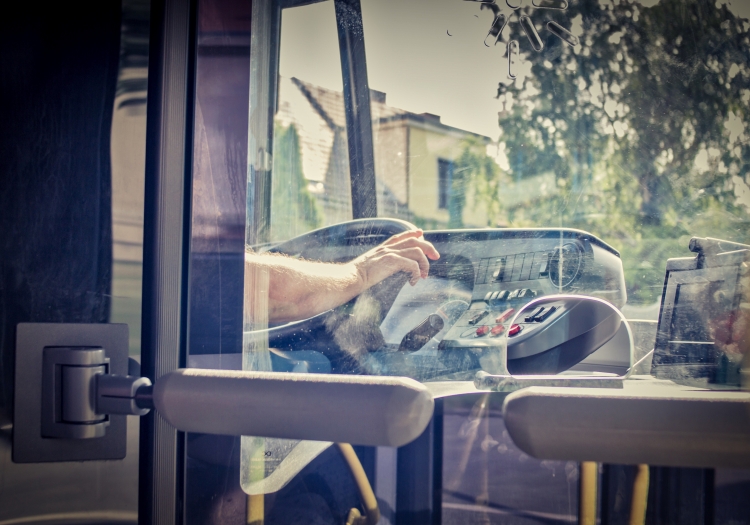 Bus accidents, whether on a local route or a long-distance trip, can be traumatic and leave you with life-altering injuries. When considering bus travel, you may imagine safe, efficient, and reliable transportation. Unfortunately, reality looks a lot different––and many accidents happen and fall under one category––poor maintenance. Buses carry large numbers of passengers, and any issue with the massive vehicle, whether a mechanical failure or maintenance issues and neglected components, can have catastrophic consequences. Who will feel these consequences’ pain, burden, and even devastation? The dangerous consequences fall on the passengers like the everyday bus-riding mom or dad commuting home after a long day at work, the family excited to be heading on a little weekend getaway, or maybe your neighbor who took the three-hour ride to the coast so she could finally surprise her home-sick daughter who’s been off at college. Whatever the reason, many of us have taken and trusted California’s buses, whether private or public transit.
Bus accidents, whether on a local route or a long-distance trip, can be traumatic and leave you with life-altering injuries. When considering bus travel, you may imagine safe, efficient, and reliable transportation. Unfortunately, reality looks a lot different––and many accidents happen and fall under one category––poor maintenance. Buses carry large numbers of passengers, and any issue with the massive vehicle, whether a mechanical failure or maintenance issues and neglected components, can have catastrophic consequences. Who will feel these consequences’ pain, burden, and even devastation? The dangerous consequences fall on the passengers like the everyday bus-riding mom or dad commuting home after a long day at work, the family excited to be heading on a little weekend getaway, or maybe your neighbor who took the three-hour ride to the coast so she could finally surprise her home-sick daughter who’s been off at college. Whatever the reason, many of us have taken and trusted California’s buses, whether private or public transit.
Why are we seeing so many of these maintenance-related accidents with public transportation, and what are your legal options if you or your loved one suffers an injury? Below are answers to these and other critical questions and the necessary measures following a catastrophic California bus accident.
What Causes Poor Bus Maintenance?
Firstly, when a bus isn’t adequately maintained, it’s only a matter of time before an accident occurs. Buses, of course, are subject to wear and tear just like any other vehicle. But buses take on a much greater volume of responsibility, quite literally, because of the number of lives that are entrusted to their care with each ride, every route, every day. Thus, they require regular checks and maintenance to remain safe and dependable. Poor bus maintenance can involve a variety of issues, such as:
- Brake Failures: One of the most dangerous problems that can arise from improper bus care is brake failure. You can likely picture the disasters that could ensue if such a massive vehicle’s brakes don’t have clean and precise functionality. Brakes that aren’t properly maintained can trigger nasty wrecks, especially if the driver is unable to stop the bus in time to avoid a collision.
- Tire Blowouts: Bus tires bear a great deal of weight, and if they are not replaced or maintained regularly, they can blow out at high speeds, leading to a tragic loss of control.
- Faulty Steering Mechanisms: If the bus’s steering system is compromised like a faulty component, it can cause the driver to lose control. The loss of control from faulty steering systems can have especially detrimental effects at high speeds and when making turns.
- Engine Malfunctions: A malfunctioning engine can lead to a breakdown in the middle of a busy roadway, causing accidents or further mechanical failures, like a sudden stalling.
- Suspension Issues: A worn-out suspension system can make the bus not only uncomfortable but difficult to control. Rough roads and high-speed travel mixed with suspension issues can lead to big consequences.
How Does Poor Bus Maintenance Lead to Catastrophe?
When a bus is improperly maintained, it’s putting everyone on the road at great risk. Catastrophic accidents, in particular, can happen because of the size and weight of buses. A bus collision frequently leads to severe injuries and, sadly, even fatalities because of the force involved in the event of a crash, as well as the number of passengers aboard. Poor maintenance can be the central causality behind many different types of bus wrecks.
A loss of vehicle control is one of these accidents, and poor maintenance can be a factor. Imagine being on a bus when the driver suddenly loses control or power over the vehicle. It’s scary to think about, but it happens when the bus is equipped with defective or badly maintained steering, suspension, or brake systems. In situations like this, the driver may have little to no ability to stop the bus or to avoid crashing into another vehicle, median, barrier, wall, etc. The outcomes are especially horrific when other cars, cyclists, or pedestrians are involved.
Buses are larger and taller than regular vehicles, and when they are poorly maintained, they are more prone to increased risk of rollovers. A sudden tire blowout or a failure in the bus’s suspension system can lead to a loss of balance and cause the bus to tip, especially at curves or higher speeds. These accidents are terrifying for passengers as they can be thrown around in the interior of the bus, leading to serious injury or death.
One of the most dangerous outcomes of poorly maintained buses is the inability to stop quickly or smoothly enough due to brake failure. If the bus’s brakes are worn out or don’t function properly, the driver cannot slow down and stop in time. A bus not stopping fast enough can crash into other vehicles, pedestrians, or road barriers, leading to serious damage and injury.
Mechanical failures not detected during routine maintenance can cause buses to crash so badly they result in fatal collisions. Accidents like these sadly lead to fatal injuries. Often, a deadly tragedy can happen when a bus strikes a smaller vehicle or pedestrian due to the bus’s much larger size and weight.
Who is Responsible?
If you are recovering from a bus accident injury caused by poor maintenance, you may be wondering who is responsible for the damages. California follows comparative negligence, meaning one party or multiple parties can be held liable.
- The Bus Company: The primary responsibility for maintaining a bus lies with the bus company. They are required by law to ensure that their vehicles are roadway-safe. These vehicles must be kept safe to operate and meet all the maintenance standards. If the bus company fails to perform its required and regular inspection, neglects to fix issues, or continues operating a bus that has known problems, then the company can be held liable for any accidents that result.
- The Bus Manufacturer: Sometimes, the issue with a bus comes down to a design flaw or a manufacturing error. A defect can cause an accident. If a defective part, like faulty brakes or tires, were installed during manufacturing, the bus manufacturer can be deemed partially or solely liable for the accident.
- Maintenance Contractor: If the bus company contracts out their maintenance, meaning they hire a third-party contractor to perform the maintenance on their fleet, and that contractor fails to maintain the vehicles appropriately, the contractor could also be held liable. For instance, if the maintenance contractor did not correctly check the brakes or failed to replace worn-out tires, their negligence could contribute to the accident.
- The Bus Driver: In some cases, the driver may also share responsibility, such as if they were aware of a maintenance issue but continued operating their bus without reporting it. California bus drivers are subject to certain regulations requiring them to report any safety concerns or vehicle malfunctions to their employers. Further, California Civil Code §2100 requires all bus drivers and other paid carriers of persons to take the utmost care and perform due diligence.
Seeking Compensation After The Bus Accident
If you’ve been injured in a bus accident caused by poor maintenance, you may be entitled to compensation for your damages. Here’s how the process usually shakes out:
- Medical Bills: You may be entitled to compensation for the medical costs that begin pooling after an accident. Hospital visits, surgeries, physical therapies, prescriptions, and long-term care costs fall under medical expenses.
- Lost Wages: If your injuries prevent you from working, you can absolutely discuss seeking lost income compensation with your attorney. A loss of earning capacity due to permanent disabilities stemming from the accident can also be calculated as part of your compensation.
- Pain and Suffering: Victims of California personal injury accidents are entitled to compensation for the pain and emotional distress inflicted by the accident. Individuals may also seek compensation for diminished quality of life.
- Punitive Damages: Where gross negligence is concerned, like if the bus company is proven to have knowingly operated a faulty bus, punitive damages can be claimed. Pursuing punitive damages is critical for everyone as they deter other individuals and entities from mimicking the same negligent behavior in the future.
Day One: Right After The Accident
If you have been part of a bus accident caused by poor maintenance, you must act swiftly when your legal rights are at stake. To ensure you get all of the different forms of compensation you may be eligible for; you need to document as much of the accident and your injuries as possible from day one. Seeking immediate medical attention after the accident signals the start of this documentation, along with requesting a police report from the responding agencies. Take photos and videos of your seat, what’s around you, the exterior of the bus, and the scene. If you are immediately incapacitated, perhaps a family member could assist you. In accidents with these big vehicles and other passengers, it is vital to begin forming relationships with the other passengers, looking at each other as witnesses. Further, there may have been pedestrians, cyclists, other drivers, business owners, and more who can offer witness reports and surveillance footage of the accident and moments leading up to it. Get everyone’s contact info along with the incident report. Depending on whether you are dealing with a public or private company, you may need to file an incident report. You typically only have 6 months to file an incident report when dealing with a public bus company or, in other words, a government or public entity. You should be aware that you will have separate strict deadlines to adhere to when the accident involves the government.
Don’t Wait –– Getting the Justice You Deserve
After an accident, your number one priority is your health, but soon after, or with the pivotal help of your attorney, you must consider the legal steps to protect your rights. Consulting with an attorney is especially crucial when dealing with a bus accident. Multiple parties––like the bus company, the manufacturer, the government, and even maintenance contractors––could be liable for the injuries you are suffering from. Determining who is at fault requires a thorough investigation, which can be hard to handle on your own and while recovering from the crash.
Aside from these huge components of investigating the accident and identifying the liable parties, negotiating for compensation is complex. Insurance companies are looking out to protect their bottom line first, then their client. You, your injuries, your suffering, and the trauma you endured are all elements they will try to minimize, deflect, and avoid. But don’t fret––instead, contact the compassionate and experienced California bus accident attorneys of Sanford A. Kassel, A Professional Law Corporation at 909-884-6451. We will answer your questions, hear your concerns, and get you started toward the compensation you deserve. Schedule a free and confidential consultation today. We are located at 650 East Hospitality Lane, Suite 580, San Bernardino, CA 92408. Let us take care of the legal details while you focus on your recovery and loved ones.



